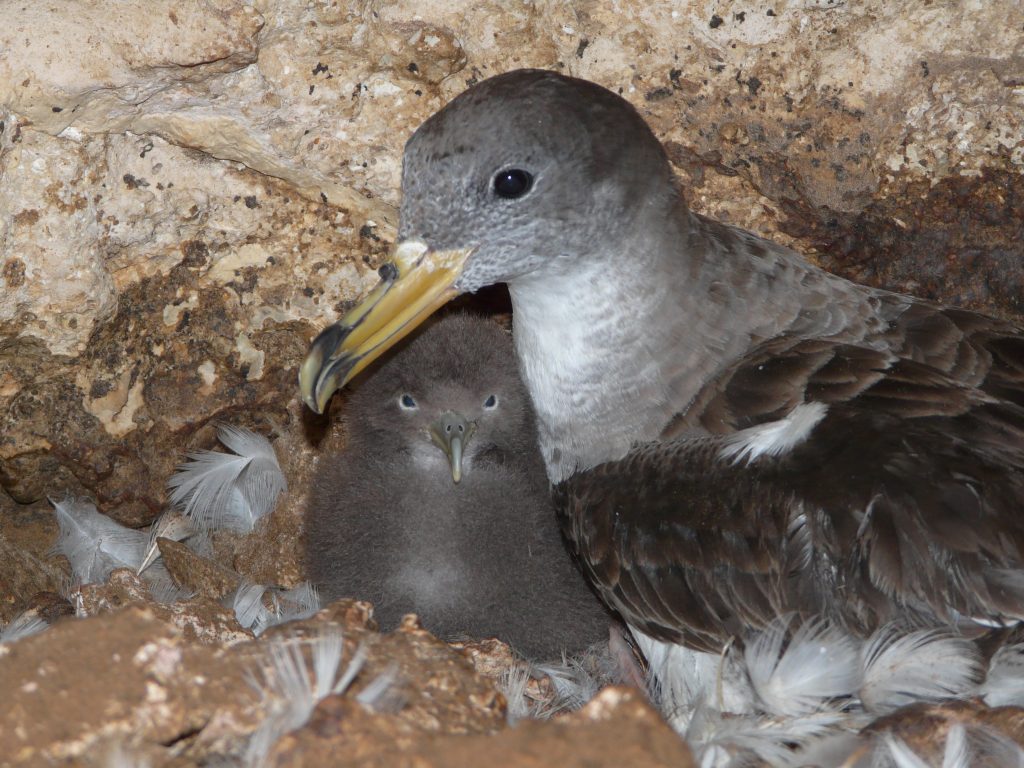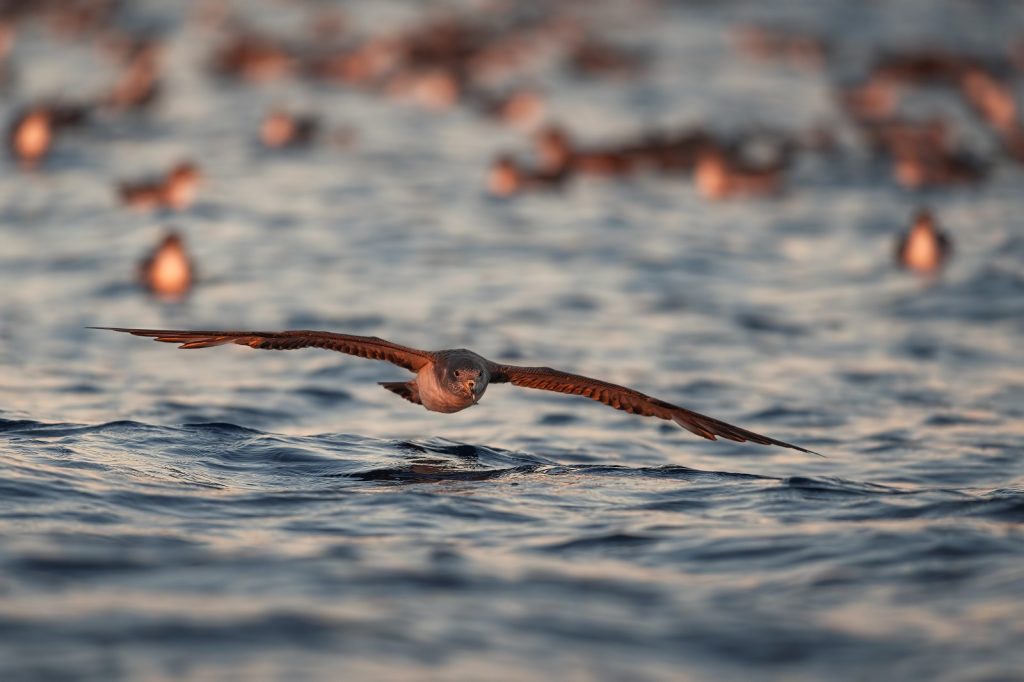The Scopoli’s shearwaters (Calonectris diomedea) is an endemic procellariform seabird breeding in the heavily exploited Mediterranean Sea and wintering in the south Atlantic Ocean. Scopoli’s shearwaters perform a long and intensive breeding season. Monogamous pairs lay a single egg in late May and the full-grown chick fledges in October. During incubation, parents alternate incubation duties; one parent performs a long foraging trip (ca. 8 days) while the partner fasts at the nest. Shortly after hatching, adult shearwaters only attend the nest at night to feed the chick. They usually perform a so-called “dual foraging strategy”; several short trips lasting 1-4 days undertaken for chick-provisioning are interpolated with a 4-10 day trip performed both for chick- and self- provisioning. Our research activity on the species mainly focuses on the foraging movement ecology of breeders. However, collaborating with researchers with other specialisations allows us to explore different subjects related to the movement ecology of this species, such as: migration, interactions with commercial fisheries, identification of marine conservation hotspots, olfactory-cued navigation systems, effects of moonlight on nocturnal foraging and colony attendance, and Lévy patterns as models of at-sea behaviour.
 © Jacopo G. Cecere
© Jacopo G. Cecere © Andrea Benvenuti
© Andrea BenvenutiMain study sites
Arcipelago di La Maddalena (northern Sardinia), since 2011.
Capo Caccia (northern Sardinia), since 2021.
